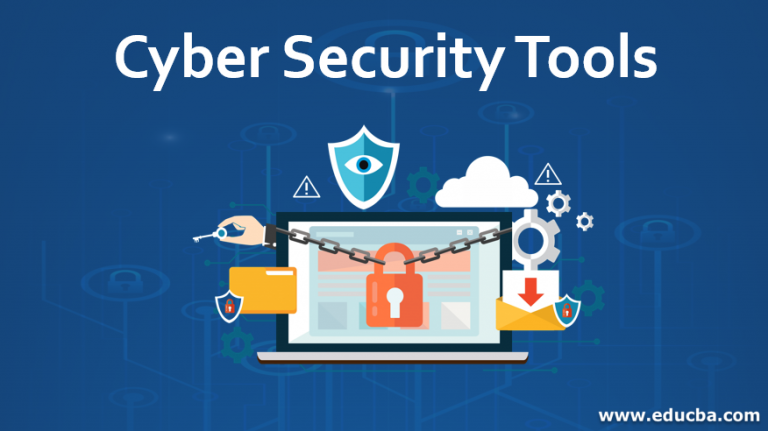
Cyber Attack Tools Are Now Easily Available Online
Cyber attack tools are now easily available online, a chilling reality that’s reshaping the cybersecurity landscape. It’s no longer a matter of if, but when, these tools fall into the wrong hands. This accessibility has democratized malicious activity, empowering individuals with minimal technical expertise to unleash devastating attacks. We’ll delve into the implications of this alarming trend, exploring the types of tools available, the skills needed to use them, and the crucial steps we can all take to protect ourselves.
The ease of access to these tools is frightening. From dark web marketplaces offering sophisticated malware to easily accessible tutorials on exploiting vulnerabilities, the barrier to entry for cybercrime has plummeted. This isn’t just a problem for large corporations; everyday individuals and small businesses are increasingly vulnerable. Understanding the risks and taking proactive measures is no longer optional – it’s essential for survival in this increasingly digital world.
Accessibility of Cyber Attack Tools
The ease with which malicious cyber attack tools are now available online presents a significant threat to global cybersecurity. This accessibility dramatically lowers the barrier to entry for malicious actors, empowering individuals with limited technical expertise to launch sophisticated attacks. This democratization of attack capabilities has profound implications for businesses, governments, and individuals alike.The implications of readily available cyber attack tools are far-reaching and deeply concerning.
The sheer volume of readily available tools means a constant influx of new threats, overwhelming existing security measures and necessitating continuous adaptation and updates. Furthermore, the lowered technical barrier to entry means a larger pool of potential attackers, ranging from lone individuals to organized crime groups and state-sponsored actors. This increased threat landscape demands a more proactive and comprehensive approach to cybersecurity.
Types of Easily Accessible Cyber Attack Tools
Numerous types of cyber attack tools are easily accessible online. These range from relatively simple tools for carrying out basic attacks like denial-of-service (DoS) to more sophisticated tools capable of executing complex attacks such as malware deployment, data exfiltration, and network intrusion. The availability of these tools spans various attack vectors, including network attacks, phishing campaigns, and social engineering exploits.
It’s scary how readily available cyber attack tools are online these days; anyone can potentially unleash havoc. This ease of access highlights the importance of robust security, especially when considering the rapid development capabilities offered by platforms like those discussed in this article on domino app dev the low code and pro code future. Building secure applications is crucial, as even the most innovative tech can be vulnerable if not properly protected from the ever-growing threat of readily accessible attack tools.
Online Marketplaces and Forums
Several online marketplaces and forums facilitate the trade and distribution of cyber attack tools. While many operate in the shadows of the dark web, some are surprisingly visible on the surface web, camouflaged within seemingly legitimate online communities. These platforms often utilize encryption and anonymity tools to protect both buyers and sellers. Examples include hidden services on the dark web accessible only through specialized browsers like Tor, and certain encrypted forums and chat groups that require invitation or specific access credentials.
These platforms vary greatly in their level of sophistication and security measures. It is important to note that participation in these markets is illegal and carries significant risks.
Comparison of Readily Available Attack Tools, Cyber attack tools are now easily available online
The following table compares three hypothetical examples of readily available attack tools. Note that the specific capabilities and features of real-world tools are constantly evolving and can vary significantly. The table is intended to illustrate the range of functionality commonly found in accessible tools.
| Tool Name | Primary Function | Key Features | Ease of Use |
|---|---|---|---|
| Hypothetical Tool A | DoS Attacks | Simple interface, customizable attack parameters, multiple target support. | Beginner |
| Hypothetical Tool B | Malware Deployment | Payload customization, evasion techniques, remote control capabilities. | Intermediate |
| Hypothetical Tool C | Network Exploitation | Vulnerability scanning, exploit modules, post-exploitation capabilities. | Advanced |
The Skill Level Required to Use These Tools

The accessibility of cyber attack tools online is a double-edged sword. While democratizing access to cybersecurity knowledge, it also lowers the barrier to entry for malicious actors, regardless of their technical prowess. Understanding the skill levels required to wield these tools is crucial to assessing the potential threat landscape. The spectrum ranges from readily usable tools requiring minimal technical expertise to sophisticated tools demanding advanced programming and networking skills.The technical expertise needed to effectively use readily available cyber attack tools varies wildly.
Some tools are designed with user-friendliness in mind, offering intuitive interfaces and requiring minimal understanding of underlying technical concepts. Others, however, demand a deep understanding of networking protocols, operating systems, and programming languages. The consequences of misuse can be severe, regardless of the user’s skill level, highlighting the need for responsible disclosure and ethical hacking practices.
Tool Complexity and Required Skill Sets
The complexity of cyber attack tools directly correlates with the technical skills needed to operate them effectively. For instance, a simple phishing tool might only require basic computer literacy to create and send malicious emails. In contrast, exploiting a zero-day vulnerability in a complex system requires advanced programming, reverse engineering, and network penetration skills. The difference in skill sets needed is significant, and the potential damage caused can escalate accordingly.
Examples of Tools Requiring Varying Skill Levels
A readily available phishing kit, for example, might only require a user to input the target’s email address and a malicious link. The kit handles the rest, automatically sending emails and collecting credentials. This requires minimal technical skill. On the other hand, exploiting a vulnerability in a web application often requires in-depth knowledge of web technologies like SQL injection, cross-site scripting (XSS), and understanding how to craft and execute exploit code.
This demands advanced programming and security knowledge.
Consequences of Misuse by Individuals with Limited Technical Skills
Individuals with limited technical skills attempting to use advanced cyber attack tools often face unintended consequences. They may misconfigure tools, leading to ineffective attacks or accidental damage to their own systems. They may also expose themselves to legal repercussions, as the misuse of such tools is often a criminal offense. For example, a novice user attempting a distributed denial-of-service (DDoS) attack using a readily available tool might inadvertently expose their IP address, making them easily traceable by law enforcement.
Furthermore, poorly executed attacks can damage reputation and compromise personal data.
Skill Sets Required for Various Attack Tools
The skill sets required vary significantly depending on the tool and the intended attack vector.
- Phishing: Basic computer literacy, email knowledge.
- Simple Malware Distribution: Basic computer literacy, understanding of file sharing.
- DDoS Attacks (using readily available tools): Basic networking knowledge.
- Exploiting Web Application Vulnerabilities: Advanced programming skills (e.g., Python, JavaScript), knowledge of web technologies (e.g., SQL, XSS), network security concepts.
- Network Penetration Testing (advanced tools): Extensive knowledge of networking protocols, operating systems, security auditing, and ethical hacking methodologies.
- Developing Custom Malware: Advanced programming skills in multiple languages, reverse engineering skills, deep understanding of operating systems and security.
Legal and Ethical Implications
The readily available nature of cyber attack tools presents a significant challenge, blurring the lines between legitimate security research and malicious intent. The ease of access raises serious legal and ethical questions regarding the responsibility of individuals, developers, and governments in mitigating the potential for misuse. Understanding the legal ramifications and ethical considerations is crucial for navigating this complex landscape.The legal ramifications for individuals acquiring and using these tools vary significantly depending on their intent and the specific actions taken.
Simply possessing such tools might not always be illegal, but using them to commit a crime, such as unauthorized access to computer systems, data theft, or disruption of services, carries severe penalties. The lines can become further blurred when considering the use of these tools for penetration testing or security research, which might be legal under certain circumstances but requires strict adherence to legal frameworks and ethical guidelines.
The key distinction often lies in the intent behind the acquisition and use.
Legal Frameworks Governing Cyber Attack Tools
Legal frameworks governing the creation and distribution of cyber attack tools differ substantially across countries. Some nations have stricter laws regarding the development and distribution of offensive tools, even for legitimate security purposes, while others have a more lenient approach. For example, the Computer Fraud and Abuse Act (CFAA) in the United States criminalizes unauthorized access to computer systems, regardless of intent in some cases, while the UK’s Computer Misuse Act focuses on unauthorized access, modification, and denial of service attacks.
The European Union’s General Data Protection Regulation (GDPR) plays a significant role in data protection, indirectly impacting the use of tools that could compromise personal data. These differing legal landscapes create challenges for international collaboration in combating cybercrime and regulating the accessibility of these tools. The lack of harmonization across jurisdictions presents opportunities for individuals to exploit legal loopholes.
Ethical Considerations of Accessible Cyber Attack Tools
The ethical considerations surrounding the accessibility of cyber attack tools are multifaceted. While these tools can be used for legitimate purposes like penetration testing and security research, their availability also presents a significant risk. The ease with which malicious actors can obtain and utilize these tools significantly increases the threat landscape. Ethical dilemmas arise when considering the potential for misuse, the responsibility of developers in creating and distributing such tools, and the potential harm caused by individuals lacking the necessary expertise or ethical understanding.
The balance between promoting cybersecurity research and preventing malicious use remains a constant challenge. A strong ethical framework is crucial for guiding the development, distribution, and use of these tools.
Potential Legal Consequences
The following table Artikels potential legal consequences in three different jurisdictions for possessing and using readily available cyber attack tools. Note that these are simplified examples and specific penalties can vary based on numerous factors including the severity of the offense, the jurisdiction, and the specific laws involved.
| Jurisdiction | Possession | Unauthorized Use (e.g., data breach) | Development/Distribution (Malicious Intent) |
|---|---|---|---|
| United States | Potentially legal (depending on intent and state laws), but can become illegal if linked to criminal activity. | Felony charges under CFAA, potential for lengthy prison sentences and significant fines. | Felony charges under CFAA and other relevant statutes, severe penalties. |
| United Kingdom | Potentially legal, but illegal if intent is malicious. | Prison sentences and fines under the Computer Misuse Act. | Prison sentences and fines under the Computer Misuse Act. |
| European Union (Example: Germany) | Potentially legal, but illegal if intent is malicious. | Significant fines and potential imprisonment under various laws depending on the nature and extent of the damage. | Significant fines and potential imprisonment under various laws depending on the nature and extent of the damage. |
The Role of Law Enforcement and Cybersecurity Professionals
The democratization of cyber attack tools presents a significant challenge to law enforcement and cybersecurity professionals worldwide. The ease of access to these tools, coupled with the increasing sophistication of attacks, necessitates a multi-pronged approach to mitigation and response. This includes proactive measures to disrupt the supply chain of these tools, as well as reactive strategies to investigate and respond to attacks effectively.The challenges faced by law enforcement in combating the proliferation of readily available cyber attack tools are multifaceted.
Firstly, identifying and tracking the individuals and groups behind the creation and distribution of these tools is incredibly difficult due to the anonymous and decentralized nature of the online marketplaces where they are often sold. Secondly, jurisdictional issues complicate investigations, as perpetrators may be located in different countries with varying legal frameworks and levels of cooperation. Finally, the rapidly evolving nature of these tools necessitates constant adaptation and training for law enforcement agencies to keep pace with new threats.
Resources are often stretched thin, and specialized expertise in digital forensics and cybercrime investigation is not always readily available.
Law Enforcement Challenges in Combating Cyber Attack Tool Proliferation
The anonymity afforded by the dark web and cryptocurrency transactions makes tracing the origin and flow of funds related to the sale of these tools extremely challenging. Furthermore, the constant evolution of these tools, with new versions and features emerging frequently, requires law enforcement to invest heavily in continuous training and technological upgrades to maintain their effectiveness. International cooperation is also crucial but can be hampered by differing legal frameworks and priorities among nations.
It’s scary how readily available cyber attack tools are online these days, making robust security crucial. That’s why understanding solutions like cloud security posture management is so important; check out this article on bitglass and the rise of cloud security posture management to learn more. Ultimately, the ease of access to attack tools highlights the urgent need for proactive security measures to protect ourselves and our data.
For instance, a tool developed and sold from one country might be used to target systems in another, leading to complex extradition and evidence-gathering processes.
Cybersecurity Professional Mitigation Strategies
Cybersecurity professionals employ a range of strategies to mitigate the risks associated with readily available cyber attack tools. These strategies often focus on strengthening defensive capabilities, improving threat detection, and enhancing incident response capabilities. A key element is proactive threat intelligence gathering, constantly monitoring online forums and marketplaces for new tools and attack techniques. This allows for the development of countermeasures and the proactive patching of vulnerabilities before they can be exploited.
Furthermore, security awareness training for end-users is critical in preventing attacks, as many attacks rely on social engineering and phishing techniques. Robust security architectures, including multi-factor authentication, intrusion detection systems, and regular security audits, also play a crucial role in mitigating the impact of these attacks.
Examples of Successful Law Enforcement Interventions
Several law enforcement agencies have successfully disrupted online marketplaces selling cyber attack tools. Operation Dark HunT, for example, involved international cooperation to dismantle a major dark web marketplace selling malware and hacking tools. This operation resulted in numerous arrests and the seizure of significant amounts of illicit funds. While specific details of these operations are often kept confidential for operational security reasons, the successes demonstrate the effectiveness of coordinated international efforts in combating this threat.
Similar successful takedowns have involved collaboration between law enforcement agencies and private sector cybersecurity companies, highlighting the value of public-private partnerships in this domain.
Cybersecurity Investigation Procedure Using Readily Available Tools
A cybersecurity professional investigating an attack using a readily available tool would follow a structured approach. The initial step involves identifying the compromised systems and assessing the extent of the breach. This involves analyzing logs, network traffic, and system files to determine the entry point of the attacker, the tools used, and the data compromised. Next, the professional would analyze the malware or tool used in the attack, identifying its capabilities and potential impact.
This may involve reverse engineering the tool to understand its functionality and identify any unique characteristics that can aid in attribution. Following this, the investigation would focus on identifying the attacker. This involves analyzing network traffic, digital forensics, and potentially collaborating with law enforcement agencies to trace the attacker’s digital footprint. Finally, the investigation culminates in remediation, including patching vulnerabilities, restoring compromised systems, and implementing preventative measures to prevent future attacks.
This comprehensive approach ensures a thorough investigation and effective response to the attack.
Mitigating the Risks

The democratization of cyber attack tools presents a significant challenge, but it’s not insurmountable. The good news is that robust defense strategies exist, and proactive measures can significantly reduce your vulnerability. By understanding the threats and implementing appropriate safeguards, individuals and organizations can effectively mitigate the risks associated with readily available attack tools. This requires a multi-layered approach encompassing both technical and procedural safeguards.The availability of these tools doesn’t negate the importance of fundamental security practices.
In fact, it underscores their necessity. The ease of launching an attack only amplifies the importance of preventative measures. A strong security posture isn’t about stopping every attack, but significantly raising the bar for attackers, making the cost and effort of an attack outweigh the potential reward.
Regular Software Updates and Security Patches
Software updates aren’t just about adding new features; they are critical for patching known vulnerabilities. These vulnerabilities are constantly being discovered and exploited by malicious actors. Attack tools often leverage these weaknesses, making timely patching essential. Failing to update software is like leaving your front door unlocked – it’s an open invitation for trouble. Organizations should establish a rigorous patching schedule, prioritizing critical updates.
Individuals should enable automatic updates whenever possible, ensuring their systems are always running the latest, most secure versions of software. The 2017 WannaCry ransomware attack, for example, exploited a known vulnerability in older versions of Microsoft Windows, highlighting the devastating consequences of neglecting software updates.
Strong Password Policies and Multi-Factor Authentication
Strong passwords remain a cornerstone of cybersecurity. Simple passwords are easily cracked using readily available tools. A robust password policy requires complex passwords, including a combination of uppercase and lowercase letters, numbers, and symbols, and regular changes. However, even the strongest password can be compromised. This is where multi-factor authentication (MFA) shines.
MFA adds an extra layer of security by requiring multiple forms of verification, such as a password and a one-time code sent to your phone or email. This makes it significantly harder for attackers to gain access even if they obtain your password. Consider the recent high-profile data breaches where strong passwords alone were insufficient to prevent unauthorized access; MFA would have added a crucial layer of protection.
Best Practices for Improved Cybersecurity Posture
Implementing a comprehensive security strategy requires a multifaceted approach. The following best practices are crucial for both individuals and organizations:
- Keep software updated: Enable automatic updates for operating systems, applications, and firmware.
- Use strong, unique passwords: Employ a password manager to generate and securely store complex passwords for each account.
- Enable multi-factor authentication (MFA): Utilize MFA wherever it’s available to add an extra layer of security.
- Regularly back up data: Implement a robust backup strategy to protect against data loss in the event of an attack.
- Educate users: Provide regular security awareness training to employees and family members to help them identify and avoid phishing scams and other social engineering attacks.
- Implement firewalls and intrusion detection systems: These tools can help monitor network traffic and prevent unauthorized access.
- Use antivirus and anti-malware software: Keep these tools updated and regularly scan your systems for threats.
- Segment networks: Divide your network into smaller, isolated segments to limit the impact of a successful attack.
- Monitor network activity: Regularly review network logs for suspicious activity.
- Develop an incident response plan: Having a plan in place for how to respond to a security incident can significantly reduce the damage.
The Impact on Businesses and Individuals

The democratization of cyberattack tools, readily available online, poses a significant threat to both businesses and individuals. The ease of access lowers the barrier to entry for malicious actors, leading to a surge in attacks and a corresponding increase in financial losses, reputational damage, and erosion of trust in online security. This accessibility amplifies the potential for widespread harm, impacting everything from personal finances to the stability of large corporations.The potential financial and reputational damage resulting from cyberattacks using readily available tools is substantial.
For businesses, this can range from direct financial losses due to data breaches, ransomware attacks, and system downtime, to indirect costs associated with legal fees, regulatory fines, and the loss of customers due to damaged reputation. Individuals, meanwhile, can suffer from identity theft, financial fraud, and the emotional distress of having their personal information compromised. The reputational damage can be particularly devastating, impacting a company’s ability to attract investors, partners, and customers, potentially leading to long-term financial instability.
Real-World Examples of Attacks Using Readily Available Tools
Numerous real-world incidents demonstrate the destructive power of readily accessible cyberattack tools. For example, the Mirai botnet, which launched massive DDoS attacks in 2016, leveraged readily available malware and exploited vulnerabilities in IoT devices. The attackers used easily obtainable tools to create a vast network of compromised devices, overwhelming targets with traffic and causing significant disruption. Similarly, the NotPetya ransomware attack in 2017, while initially believed to be targeted, spread rapidly due to its self-propagating nature and the ease with which it could be deployed using readily available tools.
The impact was global, causing billions of dollars in damage across various industries. These incidents highlight how easily accessible tools can be weaponized to cause widespread and devastating consequences.
Impact on Confidence in Online Security
The proliferation of easily accessible attack tools significantly erodes the confidence of both individuals and businesses in online security. Knowing that malicious actors can easily acquire and deploy sophisticated attack tools creates a sense of vulnerability and uncertainty. This lack of confidence can lead to decreased investment in security measures, increased reluctance to adopt new technologies, and a general feeling of helplessness in the face of potential cyber threats.
This, in turn, creates a more favorable environment for attackers to operate.
Hypothetical Scenario: Cyberattack on a Small Business
Imagine “Cozy Corner Cafe,” a small bakery with a website and online ordering system. A malicious actor downloads a readily available SQL injection tool from an underground forum. Using this tool, they exploit a known vulnerability in the cafe’s website database, gaining unauthorized access. The attacker then steals customer credit card information, email addresses, and delivery addresses.
The cafe’s online ordering system is also compromised, resulting in a temporary shutdown. The financial damage includes the cost of replacing compromised systems, the loss of revenue during the downtime, and potential fines for violating data protection regulations. The reputational damage is significant, as customers lose trust and the cafe’s online reputation is tarnished. News of the breach spreads through social media, potentially driving away customers and damaging the cafe’s long-term viability.
The cafe may also face legal action from affected customers and regulatory bodies, adding further financial strain. This scenario illustrates how a simple, readily available tool can inflict substantial damage on a small business, highlighting the urgent need for improved security awareness and robust protective measures.
End of Discussion: Cyber Attack Tools Are Now Easily Available Online
The widespread availability of cyber attack tools online presents a significant and evolving threat. While law enforcement and cybersecurity professionals are working tirelessly to combat this issue, the onus is also on individuals and organizations to bolster their defenses. By understanding the risks, implementing robust security measures, and staying informed about emerging threats, we can significantly mitigate the potential damage.
Ignoring this reality is simply not an option; proactive vigilance is our best defense against this ever-growing threat.
Popular Questions
What are some examples of easily accessible cyber attack tools?
Examples include readily available malware kits, phishing toolkits, and vulnerability scanners, often found on underground forums or dark web marketplaces.
Are there legal consequences for using these tools?
Absolutely. Possessing and using these tools for malicious purposes carries severe legal penalties, including hefty fines and imprisonment, varying by jurisdiction.
How can I protect myself from attacks using these tools?
Strong passwords, multi-factor authentication, regular software updates, and security awareness training are crucial. Also, be wary of suspicious emails and links.
What is the role of cybersecurity professionals in addressing this issue?
Cybersecurity professionals play a vital role in identifying vulnerabilities, developing protective measures, investigating attacks, and collaborating with law enforcement to shut down malicious operations.





